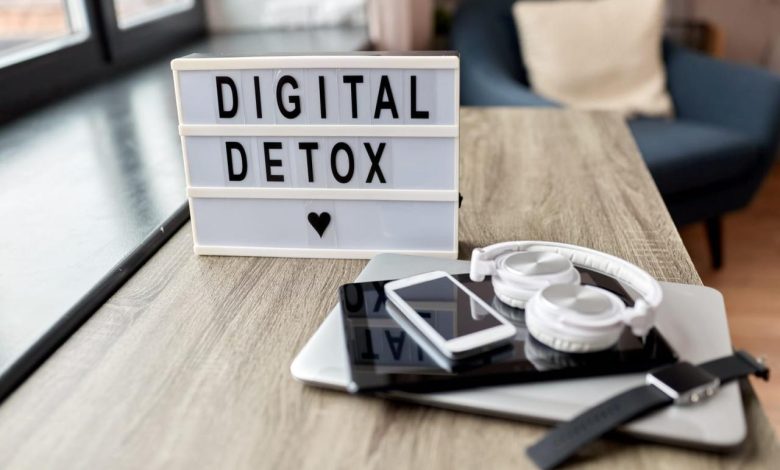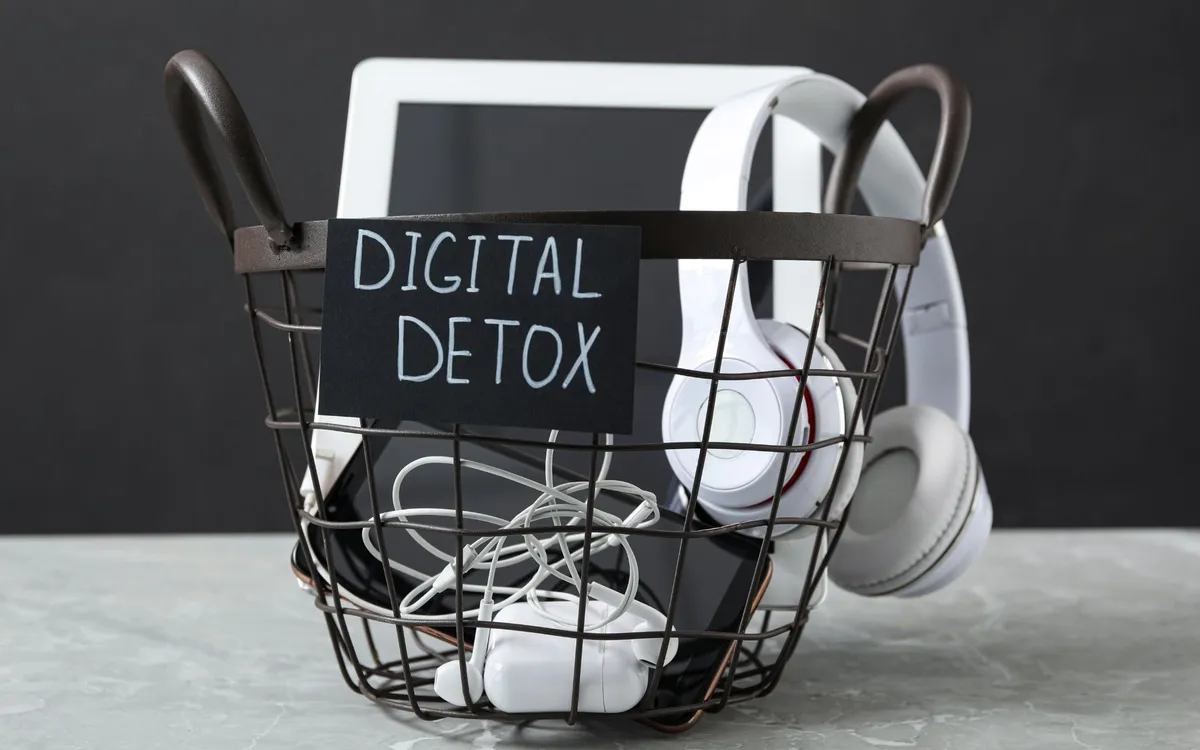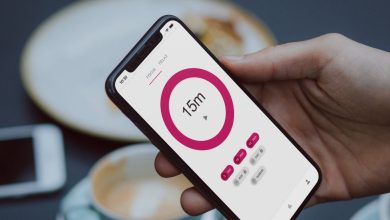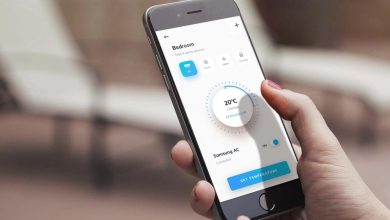Daily Digital Detox Habits for Productivity

In the contemporary landscape of our interconnected world, digital devices and online platforms have become inextricably woven into the fabric of daily life. From the moment we open our eyes to the last scroll before sleep, we are often tethered to a constant stream of information, notifications, and social stimuli. While offering unparalleled convenience and connectivity, this “always-on” culture has inadvertently created a pervasive challenge: digital overload. The relentless barrage of emails, social media updates, news alerts, and messaging app pings fragments our attention, depletes our cognitive reserves, and contributes significantly to stress, anxiety, and a diminished capacity for deep work, meaningful relationships, and genuine presence.
The insidious nature of unchecked digital consumption lies in its ability to hijack our attention and create a persistent state of mental busyness, preventing us from truly engaging with our immediate environment and inner thoughts. This constant digital stimulation not only erodes our natural attention span but also impacts our sleep quality, emotional regulation, and overall sense of well-being. A growing number of individuals are realizing that occasional, drastic “digital detoxes” are not enough. Instead, cultivating Digital Detox Daily Habits is the sustainable and most effective approach to reclaiming attention and nurturing a more balanced relationship with technology.
This comprehensive guide will delve deep into the pervasive problem of digital overload, exploring its psychological impact, detailing a wide array of actionable strategies for integrating daily digital detox habits, and illuminating the profound benefits of intentional digital disconnection. By the end of this article, you will possess the insights and practical knowledge to systematically implement Digital Detox Daily Habits, transforming your relationship with technology into one that empowers presence, enhances well-being, and fosters a more focused, intentional, and fulfilling life.
The Cost of Constant Connectivity

Before we can effectively implement daily digital detox habits, it’s crucial to understand the detrimental effects of continuous digital engagement on our minds and bodies.
A. Fragmented Attention & Reduced Focus
Constant notifications train our brains to crave novelty and switch tasks rapidly, eroding our ability to sustain deep concentration on single tasks.
B. Increased Stress, Anxiety, and FOMO
The pressure to respond immediately, the fear of missing out (FOMO) on social events or news, and endless social comparison on platforms contribute to chronic stress and anxiety.
C. Cognitive Overload & Decision Fatigue
Processing an overwhelming amount of information and making countless micro-decisions (e.g., “should I check this notification?”) depletes mental energy, making deeper thinking difficult.
D. Sleep Disruption
The blue light emitted by screens suppresses melatonin production, interfering with our natural sleep cycles. Mental stimulation from late-night scrolling also prevents relaxation.
E. Erosion of Real-World Connections
Prioritizing digital interactions over face-to-face conversations can weaken genuine relationships and reduce our capacity for empathy.
F. Reduced Creativity & Self-Reflection
Our brains need downtime, boredom, and uninterrupted space to process thoughts, make connections, and generate creative ideas. Constant digital input denies this crucial space.
Strategic Pillars for Cultivating Daily Digital Detox Habits
Implementing effective digital detox habits requires a multi-faceted approach that addresses technology settings, environmental cues, and personal behaviors.
A. Proactive Notification Management: The First Line of Defense
This is the most immediate and impactful way to reduce digital noise.
- A. Default to “Off” or “Silent”: Go into the settings of your phone, computer, and other devices. Turn off all non-essential notifications (sounds, vibrations, pop-ups). For crucial apps, set them to “silent” or “banner only.”
- B. Utilize “Do Not Disturb” / “Focus Modes”: Schedule these modes for your deep work blocks, meetings, meal times, and especially during designated personal or family time. Allow only truly critical contacts (e.g., family emergencies) to break through.
- C. Disable Badges/Red Dots: Turn off the little red numbers on app icons that signal unread messages or pending actions. These visual cues are powerful attention-grabbers.
B. Strategic Device & App Management: Taming the Digital Environment
Design your digital landscape to minimize temptation and promote intentional use.
- A. Homescreen Declutter: Remove all distracting apps (social media, news) from your phone’s homescreen. Bury them in folders on a secondary screen or remove them entirely. Keep only essential communication and utility apps visible.
- B. Grayscale Mode: Experiment with setting your phone to grayscale mode. Removing vibrant colors can make the device less visually appealing and reduce compulsive checking behavior.
- C. App Limiters & Blockers: Use built-in screen time features (Apple Screen Time, Google Digital Wellbeing) or third-party apps (e.g., Freedom, Forest, StayFocusd) to set daily time limits for specific apps or block access to distracting websites during designated hours.
- D. Physical Separation: During focus periods, meals, or before bed, physically remove your phone from your immediate vicinity. Place it in another room, a drawer, or at a charging station away from your bed.
C. Mindful Usage Habits: Cultivating Intentional Interaction
Develop conscious behaviors around how and when you engage with technology.
- A. Scheduled “Check-In” Times: Instead of constantly reacting to pings, designate specific times throughout the day (e.g., 2-3 times) to check emails, messages, and social media. Keep apps closed otherwise.
- B. Digital-Free Zones & Times: Establish explicit rules for certain areas or periods:
- Meal Times: No phones at the table.
- Bedroom: No screens (especially 30-60 minutes before bed). Charge devices outside the bedroom.
- First Hour of the Day: No phone checking until after you’ve completed a morning routine (e.g., exercise, meditation, breakfast).
- Last Hour of the Day: Wind down without screens.
- C. Single-Tasking: When you do engage with technology, focus on one task at a time. Resist the urge to switch between apps or tabs unnecessarily.
- D. Purposeful Usage: Before picking up your phone, ask yourself: “What is my intention for using this device right now?” This creates a moment of mindful choice.
D. Analog Integration: Reconnecting with the Physical World
Actively seek out non-digital activities to balance screen time.
- A. Outdoor Time: Spend time in nature daily, even if just a short walk. It rejuvenates the mind and reduces digital fatigue.
- B. Physical Books & Hobbies: Rediscover reading physical books, engaging in crafts, playing board games, or pursuing other hobbies that don’t involve screens.
- C. Face-to-Face Interaction: Prioritize in-person conversations and activities with friends and family over digital communication.
- D. Mindful Movement: Incorporate activities like walking, yoga, or stretching into your day, paying attention to your body and surroundings.
Implementing Daily Digital Detox Habits

Transforming your relationship with technology is a journey, not a destination.
A. Conduct a Digital Usage Audit
For one week, use your phone’s screen time report or a habit tracking app to genuinely observe your digital habits without judgment. Identify your biggest time sinks and trigger points for compulsive checking.
B. Set Realistic Goals
Based on your audit, choose 1-3 specific digital detox habits to implement first. For example: “No phone for the first 30 minutes after waking,” or “Social media only after 5 PM.” Don’t try to change everything at once.
C. Start with Notification Control
This is often the easiest and most impactful initial step. Go through all your device settings and aggressively prune non-essential notifications.
D. Implement One “Digital-Free” Zone or Time
Choose one rule that you can realistically stick to, like “No phones at the dinner table” or “No screens in the bedroom after 9 PM.” Make it a non-negotiable.
E. Leverage Tools to Support Your Habits
Use screen time limiters, website blockers, or even a simple timer to help you adhere to your new habits, especially in the beginning.
F. Replace Old Habits with New Ones
When you put your phone down, have a replacement activity ready. Instead of scrolling, pick up a book, talk to a family member, or go for a walk.
G. Communicate Your Intentions
Inform family, friends, or colleagues about your digital detox efforts, especially if it impacts your responsiveness. This helps manage expectations and gain support.
H. Reflect and Adjust Regularly
Periodically (e.g., weekly or monthly) assess your progress. What’s working? What’s challenging? Are you feeling the benefits? Be flexible and adjust your habits as needed.
The Profound Benefits of Daily Digital Detox Habits
Consistently practicing digital detox habits yields a wide range of positive impacts on your well-being and productivity.
A. Enhanced Focus and Attention Span
Reducing digital noise helps rebuild your ability to concentrate deeply and sustain attention for longer periods.
B. Reduced Stress and Anxiety
Breaking free from constant notifications and social comparison significantly lowers stress levels and cultivates a greater sense of calm.
C. Improved Sleep Quality
Minimizing screen time before bed and keeping devices out of the bedroom promotes better, more restorative sleep.
D. Greater Mental Clarity and Creativity
Downtime without digital input allows your brain to process information, consolidate memories, and foster creative insights.
E. Stronger Real-World Relationships
Being fully present during interactions with others deepens connections and improves communication.
F. Increased Productivity and Deeper Work
By eliminating distractions, you can engage more effectively with high-value tasks, leading to higher quality output and a sense of accomplishment.
G. More Time for Hobbies and Self-Care
Reclaiming time from mindless scrolling opens up opportunities for activities that truly rejuvenate and fulfill you.
Conclusion
In a world increasingly defined by its digital pulse, the cultivation of Daily Digital Detox Habits stands as an essential act of self-preservation and empowerment. It is far more than a fleeting trend; it is a fundamental strategy for reclaiming our most precious resource—our attention—from the incessant demands of an always-on culture. This guide has illuminated the critical path to transforming our relationship with technology from one of passive consumption to one of intentional, mindful engagement, thereby fostering a life rich in presence, well-being, and authentic connection.
By systematically understanding the profound psychological and physiological costs of digital overload, and by strategically implementing a multi-faceted approach—from aggressive notification management and disciplined device configuration to the cultivation of mindful usage habits and the deliberate integration of analog experiences—you construct an unyielding sanctuary for your attention. This proactive framework empowers you to set firm digital boundaries, consciously choose when and how you engage with technology, and create consistent pockets of digital silence throughout your day. It is about making technology serve your life’s priorities, rather than allowing it to dictate them.
The profound benefits of embracing these daily habits are far-reaching and transformative: a dramatic surge in focus and attention span, a significant reduction in stress, anxiety, and the pervasive fear of missing out, a noticeable improvement in sleep quality and mental clarity, and the revitalization of genuine real-world relationships. Ultimately, by mastering the art of the daily digital detox, you are not merely optimizing your screen time; you are actively investing in your mental health, fortifying your inner peace, and carving out a harmonious existence where technology acts as a tool to enhance, rather than diminish, the richness and mindful awareness of your daily life. It is the definitive pathway to a more balanced, intentional, and fulfilling future.



